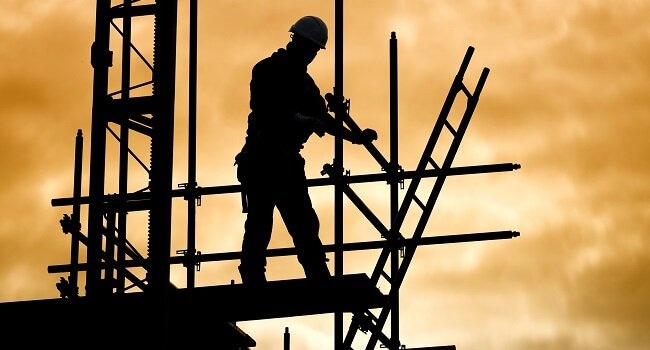Construction is an industry bustling with activity. Various elements work together to ensure you deliver the project to your client on time. The extent of interaction among these elements increases the possibility of accidents.
Many types of accidents can happen on construction sites, including slips and falls. As a contractor or project manager, ensuring safety on your site is essential. You can easily do so by understanding each type of accident and the proper remedy to implement.
In this case, what causes slip and fall accidents on construction sites? Here are some insights into this, including suggested remedies:
1. Uneven Surfaces
Uneven surfaces are common on a construction site, especially before project completion. These are one of the major causes of slip and fall accidents.
A worker can easily miss them and fall, and it makes matters worse if they’re carrying a load. This could result in the worker filing a slip and fall claim against the company.
Remedy
- Provide suitable protection underfoot. It’s an ideal solution if the uneven surface is extensive and can easily cause accidents. You can place boards on the floor. They’ll provide a temporary flat surface to walk on until you finish constructing your floors.
- Install signage. It’ll work best where the uneven surface isn’t extensive. Set up a sign by the entrance of each section, warning workers and others of its existence. They’ll be careful as they walk into the area.
- Provide adequate lighting. Poor lighting is one of the things that can cause workers not to see the ground they’re stepping on. Place them strategically for visibility in all areas.
2. Slippery Surfaces
Various activities happen on a construction site—some involving water, like curing. The result is water on the surface. Besides water, you might also find chemicals on the floors, making them slippery. If the workers are unaware of their existence, they are likely to slip and fall.
Remedy
- Always keep your floors dry. Designate a worker to ensure this.
- Set up ‘wet or slippery floor’ signage in these areas. These signs will serve as a warning to all to watch their step as they walk on these floors.
- Ensure your workers have safety shoes with a grip feature. They’re less likely to slip and fall wearing these.
3. Obstacles On The Ground
As mentioned, various activities are happening simultaneously on a construction site, each requiring different materials. In most cases, the result is materials scattered all over the site. You may find scraps, broken bricks, plastics, glass, and other debris cluttering the ground, increasing the risk of workers tripping over them as they perform their tasks.
Remedy
- Clean your construction site regularly. Your workers will always generate waste as they work. Active cleaning will ensure no waste is lying around at any given time. You can best implement it by having one or two workers clean up after the other workers as they work.
- Adopt a storage system. It’s a great solution if your issue is small tools and equipment lying on the ground. With a storage system, all tools will be properly stored, clearing the paths for traffic flow.
- Train your team on the importance of eliminating clutter around them. It’ll make them responsible for their actions. They’ll practice proper waste management and implement your adopted storage system.
4. Improperly Installed Scaffolding
Scaffolding assists workers in reaching high areas, going as high as 15 floors and even more. Working at such elevations requires utmost safety, which is sometimes compromised. Although meant to be beneficial, scaffolding can compromise safety if:
- It has loose joints.
- It’s placed on an uneven surface. It could easily topple over as your workers climb or stand on it.
- It’s improperly constructed. Scaffolding requires joining several parts, from bolts to metal stands. Issues may arise if the parts are not connected properly.
Remedy
- Have licensed construction experts or engineers set up your scaffolding to ensure safety.
- Always inspect scaffolding before workers use it, so you’ll be able to identify and rectify errors beforehand to prevent accidents.
- Ensure the scaffold material is of good quality. Most scaffolds are made of steel. Ensure the steel isn’t rusty that its structural integrity is compromised.
5. Lack Of Fall Protection
As a construction project progresses, working at certain heights is necessary. Slip and fall accidents from heights can be fatal; hence, the need for fall protection. Although important, some sites don’t observe proper fall protection measures:
- Not wearing proper PPE (Personal Protective Equipment)
- Not using harnesses
- Not having guard rails on scaffolds
- Not using safety nets
Remedy
- Adopt proper PPE, which includes helmets, safety shoes, and harnesses. Helmets protect workers from head injuries should they fall, safety shoes prevent them from slipping off the scaffold, and harnesses prevent them from hitting the ground in case they fall from a certain height. As your company adopts proper PPE, ensure everything fits your workers properly. Otherwise, they might add to the safety risks.
- Replace damaged equipment, especially harnesses.
- Always use guard rails on scaffolds and stairs at elevations. They reduce the possibility of falling over from the platform. Ensure you meet the minimum safety standards set by regulating bodies. For instance, guard rails should be at least 42 inches tall to prevent falls effectively.
Conclusion
From the article, you’ve learned the causes of slip and fall accidents on construction sites. These are easy to prevent by implementing the right solutions. Adopting the recommended remedies above as you manage construction sites will help to avoid accidents. It’ll save you from severe consequences like injuries, deaths, lawsuits, and other liabilities.





























